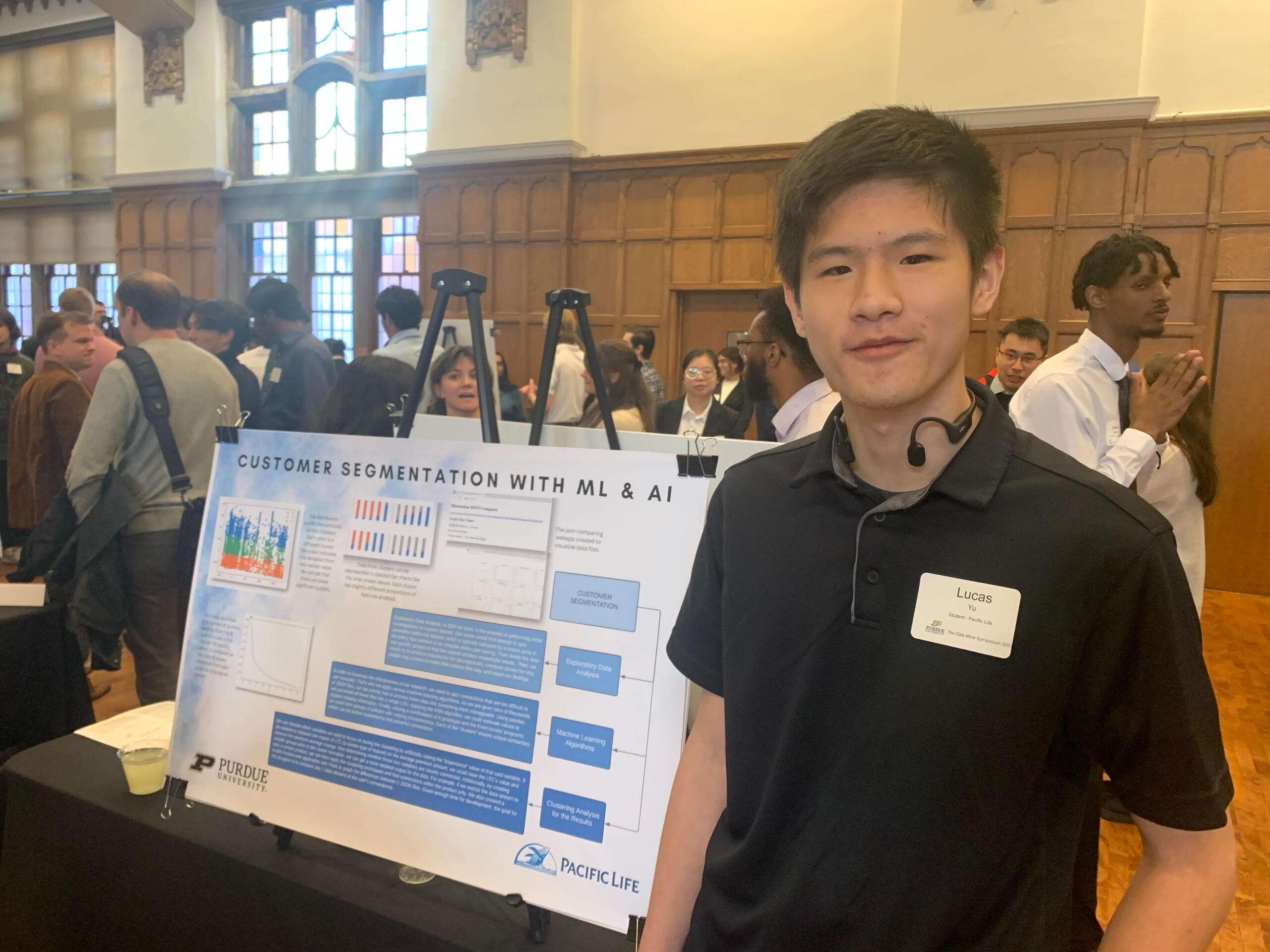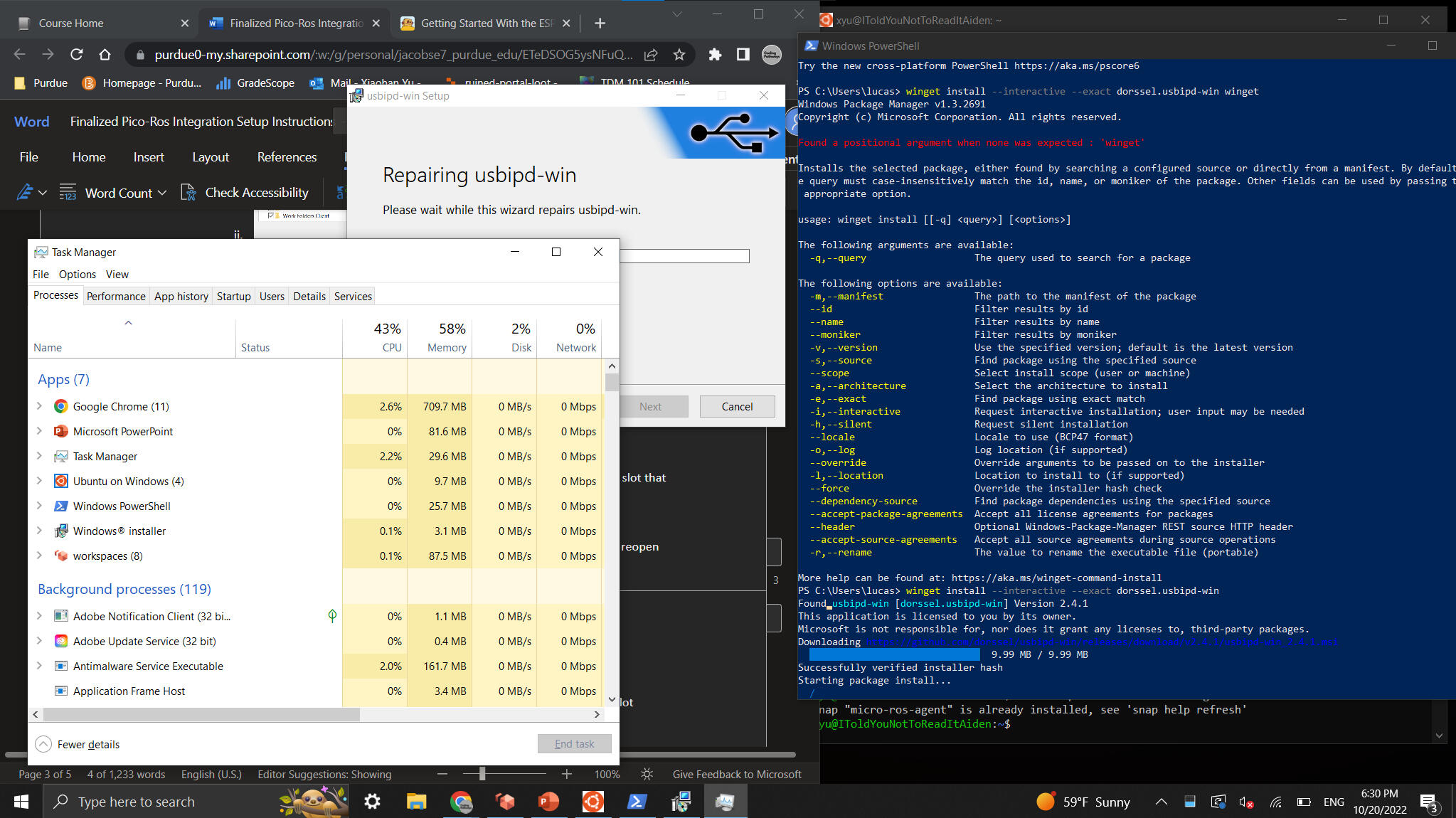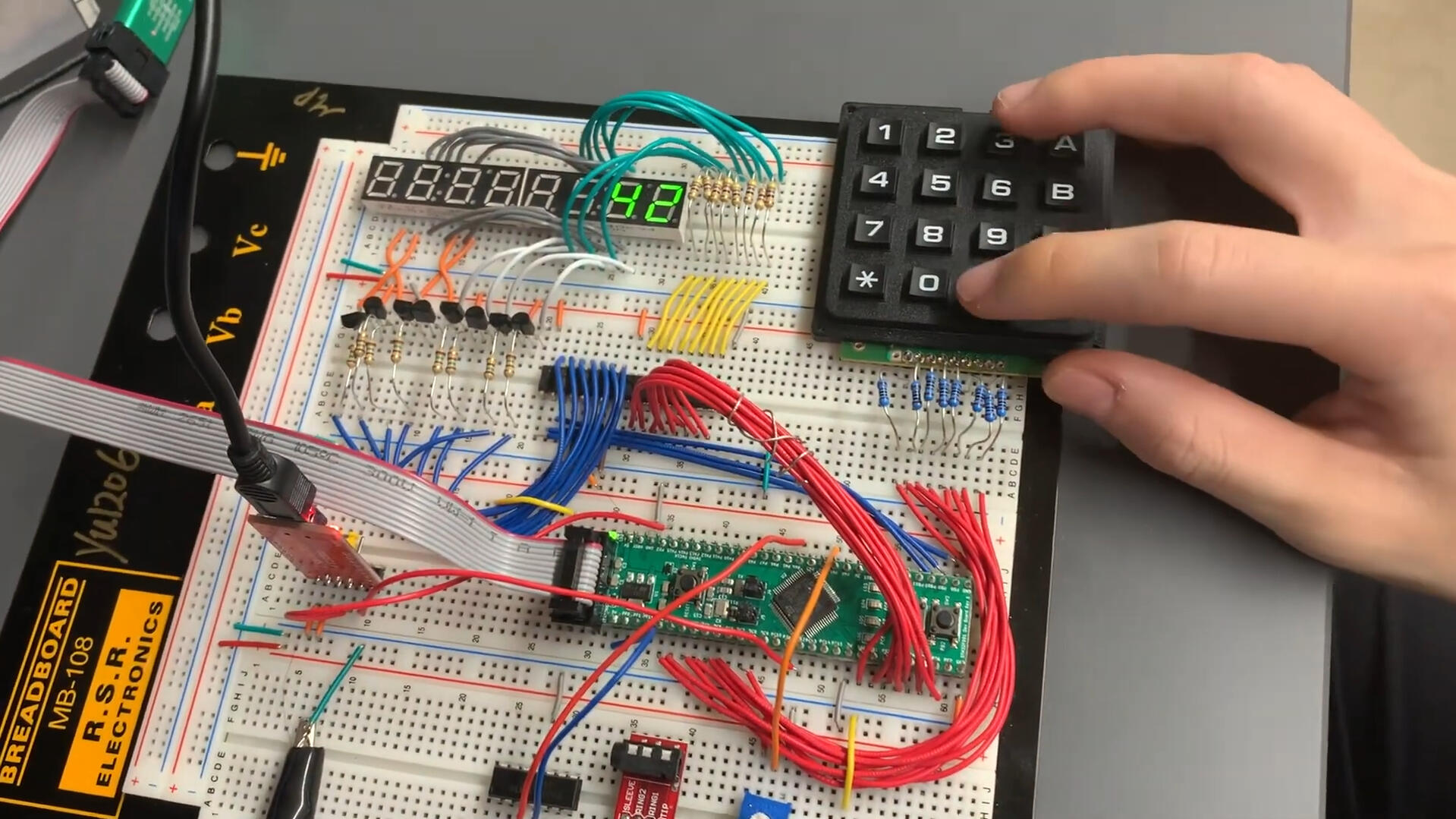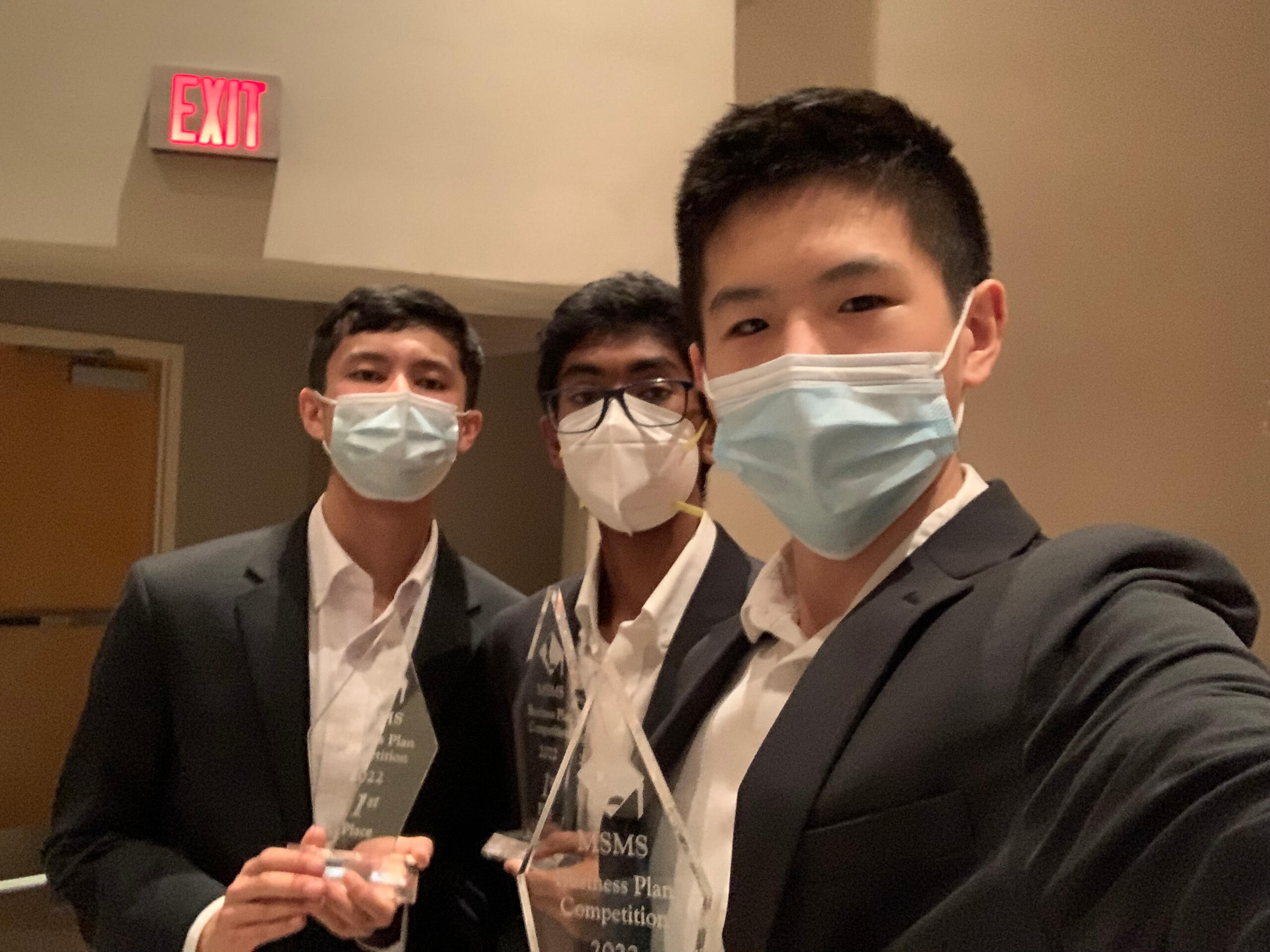
Xiaohan Yu
Hello! My name is Lucas Yu, I am a sophomore at Purdue University majoring in Computer Engineering. I am currently seeking internship experiences within a wide range of software or hardware engineering positions, and I believe I can bring quite a variety of skills and experiences to the table. This website is dedicated for my professional portfolio and as a showcase of my major projects and milestones.
Overview
Software
(2023) AlphaZero Recreation
(2022) Customer Segmentation with Artificial Intelligence and Machine Learning
(2022) json Comparer with Python, HTML, and Amazon EC2
(2022) Wizard Chess with Linux, Ubuntu, and Computer Vision
Hardware
(2024) Monotone Signal Generator
(2023) Simple PC Build / Design imitation
(2022) Electro-oculogram with Arduino
(2022) Night-light Solder
Leadership Experience
(2024) Co-authored "Conservation at Samara House" from Ideas Magazine_Volume 6
(2022) Analysis of Batteries for a Solar Energy Storage - Mathematical Contest in Modeling
(2022) Upright - MSMS Annual Business Plan Competition
(2021) Coding Pathways - MSMS Annual Business Plan Competition
Volunteering / Past Jobs
(2023) Drove transport trucks for Guys and Dollies
(2020) Volunteered as a guide for NASA Day at the Mississippi Children's Museum
Software
- (2023) AlphaZero Recreation
Since the summer of 2023, I have always hoped to replicate the groundbreaking achievement in Artificial Intelligence titled AlphaZero. AlphaZero was devised by DeepMind, an esteemed AI research company, to excel in the strategic games of chess, shogi, and go. As an enthusiast of both Chess and AI, I had hoped to recreate this technological marvel. Leveraging the invaluable guidance provided by freeCodeCamp.org's instructional video and the scholarly work "Mastering Chess and Shogi by Self-Play with a General Reinforcement Learning Algorithm" authored by David Silver and colleagues, I successfully realized this ambition.For further reference, please find pertinent resources below:GitHub repository: https://github.com/XiaohanYu1/AlphaZeroFromScratchfreeCodeCamp.org's instructional video: https://www.youtube.com/watch?v=wuSQpLinRB4Associated scholarly paper: https://arxiv.org/pdf/1712.01815.pdf
- (2022) Customer Segmentation with Artificial Intelligence and Machine Learning
During my freshman year at Purdue University, I had the privilege of participating in an undergraduate research program conducted in collaboration with Pacific Life Insurance. Our objective was to segment their customer base in hopes to effectively promoting tailored products and packages tailored to individual customer needs. Given my major in Computer Engineering, I assumed the role of lead programmer within my sub-team.Our initial step involved accessing the company's database, from which we extracted approximately 50,000 JSON files, each representing a unique customer order. These files were then formatted into Excel sheets and Python Pandas lists for analysis. Subsequently, we conducted numerous iterations of classic machine learning algorithms, including k-prototype, KNN, and k-means, employing various weightings to delineate distinct customer segments. Following this, we visualized each cluster of orders and developed hypotheses regarding the underlying motivations driving similar purchasing patterns. While specific results cannot be disclosed, our analysis revealed diverse motivations among customers, including purchases for personal insurance coverage, family coverage, profit, or savings objectives.Our findings were reported to Pacific Life, who subsequently devised new sales strategies featuring bespoke products tailored to the distinct customer clusters we identified.Concluding our research, Purdue University hosted a symposium where we shared our methodologies. Due to confidentiality constraints, we presented our approach rather than specific results. Nonetheless, the event proved to be a rewarding and enjoyable experience. Below is a photo of me presenting at the symposium:

- (2022) json Comparer with Python, HTML, and Amazon EC2.
In addition to our year-long research project, a secondary initiative involved the development of a Flask comparer web application. Collaborating with Bradley, a fellow member of my sub-team, we dedicated several months to mastering Flask, the Python-based micro web framework, with the aim of creating a tool capable of comparing two JSON files representing different approaches to life insurance for prospective customers. The resultant program generated comprehensive graphical representations and tabulated data illustrating potential disparities between the two approaches.These disparities encompassed variations in monthly premiums, payment schedules, available benefits, potential insurance add-ons (referred to as riders), and projected withdrawal values upon term completion. Subsequently, we deployed this application on Amazon EC2 services and documented detailed instructions for potential users interested in launching the website on Pacific Life's network.For further reference, the GitHub repository for this project can be accessed via the following link: https://github.com/bobberlington/jsoncomparerflask_app
- (2022) Wizard Chess with Linux, Ubuntu, and Computer Vision
Wizards Chess is a specialized area within the Autonomous Robotics Club at Purdue University. Inspired by the magical chess pieces featured in the conclusion of "Harry Potter and the Philosopher's Stone," our aim is to replicate their dynamic movement through the use of motors and wheels rather than enchantment.The Wizards Chess group comprises two distinct teams: one focused on hardware development and the other on software. I elected to join the latter. Our strategy involves leveraging the Robot Operating System 2 (ROS2) for orchestrating the movement of the chess pieces, complemented by computer vision algorithms to guide the robotic systems.Our hardware setup entails the installation of a fish-eye lens camera positioned above the chessboard, which spans a substantial area measuring approximately 20 feet by 20 feet, consisting of 64 squares crafted from colored cardboard. Initially, we attempted to train an AI model using manually captured images of the pieces placed on the board. However, encountering limitations with the camera setup, we subsequently devised a solution involving the attachment of distinctive "hats" featuring various colors and shapes to the chess pieces, enhancing their identification and localization.For further insights into our project, the complete source code is publicly available at: https://github.com/purdue-arc/arc-wizard-chessAlthough I regrettably couldn't participate in the Wizards Chess endeavor during the year 2023 due to scheduling constraints, I have remained engaged with the team's strategies and advancements. I intend to provide updates on the final design once it is unveiled.Below, you'll find a snippet of what a poor attempt to SSH into a Linux system to execute a virtual box for running ROS2 has done to my computer.

Hardware
- (2024) Monotone Frequency Generator
During my sophomore year, I took on an intriguing project involving the development of a monotone frequency generator. Leveraging C programming, along with an STM32F091RCT6 microcontroller, a breadboard, and assorted electrical components, I successfully created a device capable of receiving inputs from a numpad and generating the corresponding frequency output through a wire. This creation harnesses the functionalities of a microcontroller's timer 6, timer 15, and DAC features. For a visual demonstration of the project in action, please refer to the linked video: https://www.youtube.com/watch?v=R3wVkV77y-4

- (2023) Simple PC Build / Design Imitation
As a component of my honors contract for ECE27000, I am tasked with the design of a basic PC (CPU) using SystemVerilog. This project entails the creation of four distinct files that will function cohesively to execute commands:Alu.sv: This file encompasses the Arithmetic Logic Unit (ALU) component, designed to perform fundamental calculations.Core.sv: The core component, housed within this file, serves as the engine for command execution.Ctrl.sv: This file contains the control component, essential for decoding and executing commands.Mem.sv: Within this file resides the memory component, responsible for storing data for subsequent use.The completed files can be accessed via the following link: https://github.com/XiaohanYu1/CPU-imitation.git
- (2022) Electro-oculogram with Arduino
Milestone courses represent specialized workshop-style classes offered by Purdue University. These optional out-of-class sessions span six weeks and are designed to provide students with essential materials not covered in standard curricula. I have actively participated in five of these milestone courses, with my latest endeavor being the "Milestone - Smart Healthcare" project.Following an introduction to Arduino fundamentals, participants were tasked with crafting a mechanically intricate final project. After conducting thorough research, I elected to attempt to develop an Electro-Oculogram (EOG).Electrooculography (EOG) involves the measurement of the corneo-retinal standing potential that exists between the anterior and posterior portions of the human eye, resulting in the generation of an electrooculogram signal. This technique finds primary applications in ophthalmological diagnosis and the recording of eye movements. While the medical applications of EOG entail comprehensive procedures, the construction and design process for the device itself proved to be relatively straightforward.Below, I have included a video demonstrating the testing phase of my device:

- (2022) Night-light Solder
This project marked my initial foray into wiring and soldering. As an introductory project, I sought to create something both simplistic but aesthetically pleasing. Therefore, I had the idea of constructing a night-light, a device designed to illuminate when ambient light levels fall below a predetermined threshold, and extinguish when they surpass a certain brightness.Using a voltage divider configuration alongside a light-dependent resistor, I soldered the necessary components together. The culmination of these efforts resulted in the creation of a rather successful night-light.
Leadership Experience
(2024) Co-authored "Conservation at Samara House" from Ideas Magazine_Volume 6
During my tenure in the Honors College at Purdue University, I engaged in a comprehensive project aimed at comprehending and advocating for conservation efforts at Samara House. Within our team, we delved into multifaceted considerations essential for preserving the architectural legacy of Frank Lloyd Wright, encompassing concerns such as visitor capacity, accessibility, parking provisions, and potential for overnight stays. However, my focal point of interest lay in exploring opportunities for collaborative ventures with third-party vendors. For an in-depth exploration of this aspect, I invite you to peruse my contribution within the Ideas Magazine, commencing on page 69: https://issuu.com/vsphonorscollege/docs/ideasmagazinevolume_6
- (2022) Analysis of Batteries for a Solar Energy Storage - Mathematical Contest in Modeling
During our senior year at MSMS, two friends and I participated in COMAP's High School Mathematical Contest in Modeling (HiMCM), an esteemed international competition designed to foster teamwork and enhance modeling, problem-solving, and writing skills among high school students. With a shared enthusiasm for the challenge, we pooled our talents to address the assigned problem.Our task involved devising a battery system suitable for a residential property operating off-grid and reliant on solar energy. To approach this challenge, our team delved into various aspects including solar energy storage mechanisms, energy requirements to sustain operations during inclement weather, strategies for energy preservation, and specific demands of the target battery system.Our methodology encompassed the evaluation of multiple parameters such as cost, power rating, round-trip efficiency, usable capacity, safety rating, and lifespan across a selection of 16 potential battery brands. These data were subsequently normalized, laying the groundwork for employing both the entropy method and Analytic Hierarchy Process (AHP) to ascertain the optimal battery choice objectively, while also tailoring recommendations to suit the family's unique requirements.The entropy method, characterized by its ability to measure the dispersion of values in decision-making, facilitated the determination of relative weights based on the degree of differentiation among the evaluated criteria. Meanwhile, the AHP, a structured group decision-making technique, enabled us to derive pairwise comparisons to construct a matrix of judgments, elucidating the relative preference between battery alternatives and the importance of each attribute.Subsequently, we constructed a comprehensive mathematical model based on our empirical findings and subjected it to a sensitivity analysis to gauge its resilience to inaccuracies in input data. Following which, we compiled our insights and conclusions into a cohesive paper, encapsulating our approach and outcomes.Please note:The entropy method serves as a weighting mechanism, leveraging the dispersion of values to inform decision-making. The Analytic Hierarchy Process (AHP) facilitates structured group decision-making through pairwise comparisons, thereby elucidating relative preferences and attribute importance.

- (2022) Upright - MSMS Annual Business Plan Competition
Every year, the Mississippi School for Mathematics and Science organizes the MSMS Annual Business Plan Competition, a platform where junior and senior students collaborate to formulate business plans aimed at addressing pressing global issues.Recognizing a significant challenge prevalent in our community, my team of three identified a serious issue in our home state of Mississippi. With a combination of inadequate healthcare services, economic instability, and a rising obesity epidemic, a considerable segment of the population, notably veterans, faces barriers in accessing funding for prosthetic devices to restore lost limbs.Unified by a shared commitment to effecting positive change, we resolved to address this pressing need by establishing a venture dedicated to providing accessible and functional prosthetic solutions. Our endeavor centers on offering affordable and technologically advanced 3D-printed prosthetics to both prosthetic clinics and individual clients. By leveraging innovative biotechnological advancements, we aspire to contribute meaningfully to alleviating Mississippi's healthcare crisis and empowering individuals with the tools to regain mobility and independence.Link of the paper is as follows:

- (2021) Coding Pathways - MSMS Annual Business Plan Competition
We were also the first place winners in the business plan competition in 2021, being the first back-to-back champions in the history of my school.Our initiative is focused on bridging the digital divide by reaching out to aspiring learners residing in technologically underserved regions, eager to delve into the realm of computer science. Through a multifaceted approach encompassing hands-on activities and engaging instructional videos, our goal is to seamlessly integrate computer science education into the core K-12 curriculum of every student.Our company offers two distinct units of sale: Coding Pathways Pro (CPP) and Coding Pathways District Partners (CPDP). CPDP caters to school districts, providing them with access to CPP at a discounted rate, coupled with dedicated support personnel. On the other hand, CPP operates on a monthly subscription model, granting subscribers access to an expanded library of videos and enriched content. Exclusive new material is regularly rolled out to Pro members, accessible solely to this tier.The CPDP subscription model offers districts access to our premium platform at an annual rate of $10 per account, significantly undercutting the pricing of competing programs such as Achieve 3000 or Brilliant.org. While the contribution margin per unit fluctuates based on the phase of development, our target value stands at approximately $4.25, derived from the monthly subscription cost minus the video production expenses.With our innovative approach and commitment to democratizing access to computer science education, we're poised to make a lasting impact on learners' lives and pave the way for a more inclusive and technologically empowered future.Link to the paper below:
Volunteering / Past Jobs
- (2023) Drove transport trucks for Guys and Dollies
Over the summer of 2022, I spent a week employed by Guys and Dollies to help transport student items for back-to-school season.
- (2020) Volunteered as a guide for NASA Day at the Mississippi Children's Museum
On March 7th, 2020, the Mississippi Children's Museum partnered with educators at NASA to display the basics of solace exploration, but they needed some local support. I was offered this opportunity by the National Beta club organization, and I took it. After making it to the museum, the volunteers were put through an orientation. From which I learned how to utilize UV lights to mimic satellites and understood the basic model of a spaceship. Soon after, I taught the visitors aerodynamics through paper models of jets, elaborated on how rockets transform in the vacuum of space, and even presented special foods that astronauts relied upon after launch. Despite its shortening budget for such an outstanding event, the museum managed to include a lot of incredible facts and capture every visitor’s heart.
Contact me @:
Phone - (601) 842 - 5610
Email - [email protected] / [email protected]
LinkedIn - https://www.linkedin.com/in/xiaohan-yu-472402245/
© Untitled. All rights reserved.





